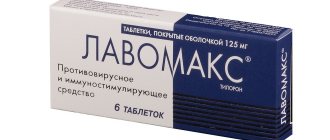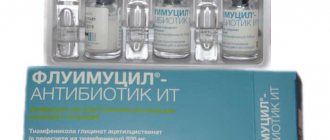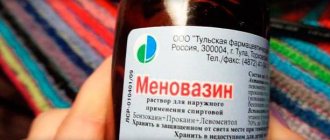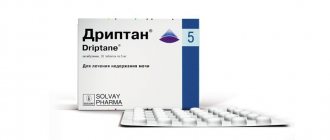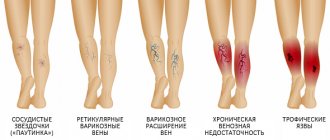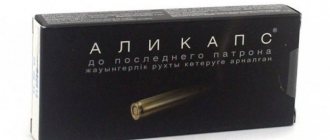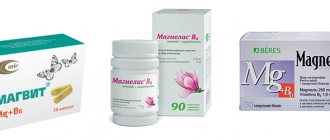Analogues of Diclofenac can have full correspondence in composition (Diclovit, Diclak), the best in quality is the original drug Voltaren. If you need a stronger analgesic effect, then choose Ketorolac or Ketoprofen, Dexalgin. Indomethacin has a greater anti-inflammatory effect.
Movalis injections are less dangerous for the stomach, and Nizilat will help protect the gastrointestinal mucosa in case of joint diseases. Indocollir or Broxinac can replace eye drops. In terms of cost, Russian Diclofenac preparations are among the cheapest.
Main analogues of Diclofenac
Analogues of Diclofenac include drugs included in the group of non-steroidal anti-inflammatory drugs; their features are indicated in the table.
| Active substance | Features of application | Trade names and their average price in rubles for 20 tablets |
| Diclofenac | A strong painkiller, if taken for a long time it is dangerous for complications from the stomach, kidneys, liver, not for children under 6 years of age | Voltaren – 230, Diclofenac (Russia) – 40, Ortofen – 50 |
| Indomethacin | Strong anti-inflammatory and moderate analgesic effect, many contraindications | Methindol – 190 |
| Ketoprofen | Stronger than Diclofenac in relieving pain, often used after operations, injuries and in oncology | Ketonal – 200, Ketoprofen – 115 |
| Dex-ketoprofen | Quickly and permanently relieves severe pain, used in surgery and oncology, not indicated for long-term use | Dexalgin – 330, Flamadex – 200, Dexonal – 230 |
| Ibuprofen | Medium strength, well expressed antipyretic effect, often taken for headaches and toothaches, for joint diseases larger doses are needed | Iburprofen – 20, Ibuklin – 160, Brufen – 300 |
| Nimesulide | Relieves joint and back pain well, less harmful to the stomach | Nise – 270, Nimesulid – 70, Nimulid – 300, Nimika – 220, Naisulid – 170 |
| Naproxen | Effective for joint pain, neuralgia and osteochondrosis, used after surgery, in gynecology and oncology, with long-term use it causes many side effects | Motrin – 230, Nalgesin – 290, Theraliv – 190 |
| Amtolmetin guancil | A new drug with minimal side effects, indicated for long-term treatment of joints, approved from 18 years of age | Nizilat – 620 |
| Ketorolac | Used for very severe pain for a short course | Ketorol – 70, Ketorolac – 60, Ketanov – 65, Dolak – 85 |
| Lornoxicam | Strong analgesic and anti-inflammatory, with a long course there are many side effects | Ksefokam – 250, Zornica – 450 |
| Aceclofenac | Well relieves joint inflammation, pain and swelling, allowed from 18 years of age | Airtal – 350, Aceclofenac – 170, Alental – 280 |
| Celecoxib | Minimal damage to the stomach, used for rheumatism, back pain, bone pain, after surgery, prohibited for heart and vascular diseases, under 18 years of age | Celecoxib – 210, Celebrex – 600, Dilaxa – 270 |
| Meloxicam | The most pronounced anti-inflammatory effect, taken only for joint diseases, gentle on the stomach | Movalis – 530, Meloxicam – 180, Melbek forte – 190, Genitron – 200, Artrosan – 170 |
| Etoricoxib | Potent and almost safe for the stomach | Arcoxia – 500, Kostarox – 620, Etoriax – 350 |
Brief Explanation
Diclofenac is one of the most popular anti-inflammatory medications. Domestic products are cheaper, but they are considered generics, that is, they have not passed all cycles of clinical trials. The most studied imported Diclofenac with proven effectiveness is the original drug Voltaren.
Modern analogues of Diclofenac of the new generation have greater selectivity of action against the enzyme cyclooxygenase type 2 (COX 2). Due to this feature, they are less harmful to the stomach, liver and kidneys, and blood clotting. The most promising are Nizilat, Arcoxia, and Celecoxib.
In terms of cost, Russian-made Diclofenac preparations are quite cheap; Ibuprofen and Nimesulide are close in price to them. Imported medicines are 7-10 times more expensive.
Side effects
The use of Diclofenac tablets can cause a number of adverse reactions arising from various body systems:
| Gastrointestinal tract | Nausea and problems with bowel movements, flatulence, bloating and peptic ulcers often occur. Sometimes the esophagus is affected, causing vomiting, stomatitis, loss of appetite, and colitis. |
| Nervous system | Dizziness with headache is quite common. Insomnia and depression, convulsions and a feeling of fear, as well as the development of aseptic meningitis occur. |
| Respiratory system | Bronchospasm and laryngeal edema may occur. |
| Genitourinary system | Oliguria and nephritis develop. |
| Sense organs | Ringing in the ears. Decreased vision and hearing impairment. |
| Vascular system | Blood pressure often rises, and sometimes a heart attack occurs. |
| Leather | Itching and burning. Eczema and urticaria occur. |
| Allergy | Vasculitis and swelling of the tongue and lips. |
Similar reactions are observed when using the solution and suppositories . A burning sensation often occurs at the injection site, and avascular necrosis may also develop. Suppositories sometimes cause swelling.
External agents (gels and ointments) rarely cause side effects. Usually this is a rash or redness of the skin.
Contraindications
Did you know that...
Next fact
All forms of the drug are not prescribed if there is intolerance to the components of the drug.
The use of the solution is prohibited under these conditions:
- Erosive and ulcerative lesions of the gastrointestinal tract.
- Hemorrhoidal bleeding.
- Intolerance to anti-inflammatory drugs in the presence of bronchial asthma or nasal polyps.
- Hematopoiesis is impaired.
- Lactation period and pregnancy.
- Hemophilia.
Contraindications for the use of tablets:
- Inflammatory bowel diseases.
- After bypass surgery.
- Pathologies of the liver and kidneys.
- Last trimester of pregnancy.
Plus additionally all contraindications for using the solution.
Prohibition of the use of candles:
- Persons under 16 years of age.
- Haemorrhoids.
- Exacerbation of proctitis.
Do not apply gel or ointment:
- If the integrity of the skin is damaged.
- Pregnant women in the third trimester.
- If you have asthma attacks.
It should be used with caution if there is a problem with blood clotting.
Video: “What is the danger of diclofenac?”
Diclofenac: the best analogues by release form
In order to correctly select the best replacement for Diclofenac, it is necessary to compare analogues by release form, because they may differ for ointments, gels, suppositories, tablets and ampoules.
Substitutes for ointment and gel
Of all the non-steroidal anti-inflammatory drugs, Diclofenac ointment and gel have the lowest prices, so cheaper substitutes can only be found among analogues in rubs:
- Menovazin;
- capsicum tincture;
- Bom Benge ointment.
They are not much lower in price (up to 10 rubles per pack), but have only a local distracting and warming effect. Diclofenac has a pronounced analgesic and anti-inflammatory effect, so it is better to make a choice in its favor.
Effective gels and ointments with an average cost include:
- Ketoprofen 5% gel – 135 rubles;
- Nimulid 1% gel – 200 rubles;
- Dolgit 5% gel – 145 rubles.
We recommend reading about how to use Diclofenac for sprains. From the article you will learn how and how Diclofenac will help with sprains, how to apply the gel, contraindications and precautions. And here is more information about how Diclofenac-Altpharm differs and how to use it.
Ketoprofen gel
The drug has a strong analgesic effect and does not damage articular cartilage. When used externally, it practically does not penetrate into the blood. Even with long-term treatment, the risk of adverse reactions is minimal. Suitable for the treatment of severe joint pain and stiffness due to:
- gout,
- rheumatoid arthritis,
- osteochondrosis,
- radiculitis.
Nimulid
The gel with nimesulide is quickly absorbed into the tissue and penetrates into the joint cavity. It has a pronounced anti-inflammatory effect and is recommended for arthritis, spondylitis (disease of the intervertebral discs), as well as rheumatic damage to the periarticular tissues. The minimum course of treatment is 1 month.
Dolgit
The active ingredient is ibuprofen, it is recommended for muscle and joint pain due to rheumatism, trauma, arthrosis, and osteochondrosis. Within half an hour after application it relieves pain, the effect lasts for several hours. After 5-7 days, swelling decreases significantly and joint mobility increases.
Safer injections
If injections with a safer drug are needed, then instead of Diclofenac you can inject Movalis for moderate pain, and for severe pain it is better to choose Ketonal.
Movalis
Meloxicam in the drug is slightly weaker than Diclofenac, but one administration is enough for a day. It is much less likely to cause local adverse reactions in the form of pain and hardening, has minimal damaging effects on the stomach and liver, relieves muscle spasms and facilitates movement. 1 ampoule per day is administered for 2-3 days. If it is necessary to continue treatment, the patient is transferred to tablets or suppositories.
Ketonal
Ketoprofen injections are less harmful, as they quickly relieve even severe joint pain, so the course of treatment is much shorter. In terms of effectiveness, the drug is close to narcotic analgesics, but is completely devoid of the ability to cause addiction. Can be administered 2 times a day. Injections may be given until joint or back pain is relieved.
What is stronger in tablets
Of the group of Diclofenac analogues, Ketorol Express tablets and Dexalgin relieve pain the most.
Ketorol express
Ketorol express tablets relieve intense pain after injury, dental pain, post-operative pain, and even cancer pain within an hour. It is effective for neuralgia and severe pain due to radiculitis. The peculiarity of this form of release is the ability to dissolve when placed under the tongue; the tablet does not even need to be washed down with water. You can take up to 4 pieces per day, and the course should not exceed 5 days.
Dexalgin
The drug contains dexketoprofen, which has a predominantly analgesic effect and its effect occurs within half an hour and lasts for at least 6 hours. Dexalgin is recommended for acute joint and lumbar pain, painful periods. You can take 3 tablets per day; the medication should not be used for more than 3-5 days.
The best candles
The most commonly used suppositories are Indomethacin and Cefekon; they are better than Diclofenac in their ability to relieve inflammation, have a wider range of indications, and Amelotex has a gentle effect on the stomach and intestines.
Indomethacin
Indomethacin suppositories are indicated for complex treatment of the inflammatory process in:
- uterine appendages (adnexitis);
- ENT organs (otitis media, sinusitis, tonsillitis);
- prostate gland (prostatitis);
- bladder (cystitis);
- joints (arthritis due to gout, rheumatoid);
- spine (spondylitis);
- muscles (myositis).
Spondylitis
The drug helps with painful periods, pain after injuries and operations, especially on the pelvic organs (in gynecology and urology).
Cefekon N
The composition of Cefekon N suppositories includes an analgesic and anti-inflammatory agent - naproxen. They help with pain of moderate severity due to:
- neuralgia;
- pinched sciatic nerve (sciatica);
- osteochondrosis (radiculitis, lumbago);
- migraine;
- premenstrual syndrome;
- colds and infectious diseases (have a good antipyretic effect).
Amelotex
The suppositories contain meloxicam; due to its selective effect on the enzyme cyclooxygenase type 2, it is less harmful to the organs of the digestive system. Used to reduce pain and inflammation in osteoarthritis, rheumatoid arthritis and ankylosing spondylitis, when long-term use is required.
Ametolex Cefekon N Indomethacin
How to replace drops
Diclofenac eye drops are used in the surgical treatment of cataracts to dilate the pupil and reduce inflammation; for this purpose they can be replaced with Broxinac and Indocollir.
Broxinac
The drops contain bromfenac, which has an analgesic and anti-inflammatory effect similar to Diclofenac. Due to their long-lasting action, it is enough to use them only once a day (Diclofenac is dripped 3-6 times a day).
Indocollior
Eye drops with indomethacin are used not only for lens surgery, but also to prevent inflammation during any other surgical interventions, conjunctivitis without signs of infection, after injury. Treatment can last from 7 to 30 days.
The cheapest substitutes
Cheaper anti-inflammatory drugs, compared to Diclofenac, are Indomethacin, Meloxicam and Ketorolac.
Indomethacin
Indomethacin is a non-steroidal drug that contains the active substance of the same name. Available in the form of suppositories for rectal administration, solution and tablets.
The drug in any form is prescribed for inflammatory diseases of the musculoskeletal system of rheumatic and non-rheumatic origin, pain syndrome of various etiologies, elevated body temperature caused by inflammation.
Properties of Indomethacin
Indomethacin is not prescribed to patients with hypersensitivity to its components, asthma, intolerance to NSAIDs, gastrointestinal tract or duodenal ulcers, bleeding of any etiology, bleeding disorders, severe diseases of the kidneys, heart, and liver. Indomethacin is not prescribed during pregnancy and lactation, as well as in children under 14 years of age.
Treatment regimen:
- At internal reception. Adult patients are prescribed 25 mg of the drug 2-3 times a day. If therapy is ineffective, the dose is increased to 50 mg three times a day. The maximum permissible dosage is 200 mg. The tablets are taken after meals.
- Severe pain may require intramuscular administration of Indomethacin. Under such circumstances, it is used at a dose of 60 mg 1-2 times a day. The duration of treatment is from 1 to 2 weeks.
- For rectal administration, 50-100 mg of Indomethacin is prescribed 1-2 times a day. As maintenance therapy, the dosage of the drug remains the same, but it is used only at night.
The main differences between Indomethacin and Diclofenac are the composition and cost. This product is cheaper than the main drug, regardless of the form of release.
Meloxicam
Meloxicam is an anti-inflammatory drug based on the active substance of the same name (7.5 mg/1 tablet). Relieves inflammation, fever, pain. Indicated for patients suffering from rheumatic or non-rheumatic pain, arthritis, spondylitis, and degenerative joint pathologies. The drug is widely used for symptomatic therapy for cephalalgia, menstrual pain and pain of other origins.
Note. Although Meloxicam has an anti-inflammatory and antipyretic effect, it does not affect the course of the underlying disease.
The drug is safer than Diclofenac, and this is its main difference from the main drug (not counting the price and composition). It can be used during pregnancy or lactation, but with extreme caution. The drug is not prescribed for children under 15 years of age, patients with gastrointestinal bleeding, gastric or duodenal ulcers, low blood viscosity, diseases of the cardiovascular system, kidneys or liver.
You should take the tablets only with meals once a day. The minimum dose is 7.5 mg. If the treatment is ineffective, the dosage is doubled. The duration of therapy is determined for each patient individually.
Ketorolac
A non-steroidal drug with analgesic and anti-inflammatory effects. Available in the form of tablets and injections. Prescribed for intense pain syndrome, including cephalgia and pain in the lower abdomen in women during menstruation. Widely used for various injuries, toothache, rheumatic pain, neuralgia, radiculitis, etc.
Not for use in children under 16 years of age, in patients with diagnosed hypovolemia, urticaria, rhinitis, or dehydration. Patients who have suffered a hemorrhagic stroke, as well as patients with severe renal impairment, should not take Ketorolac. Do not prescribe for liver diseases.
Action of Ketorolac
Ketorolac is taken orally after meals or administered as an intramuscular injection. The dose for 1 dose is 10 mg (1 tablet) or 1 ampoule with injection solution.
Tablets can be taken no more than 4 times a day with an interval between uses of at least 4-6 hours. Ketorolac is intended for short-term use only!
Are there analogues of Diclofenac without side effects, less dangerous for the stomach?
Diclofenac does not have a single analogue without side effects; you can only choose ones that are less dangerous to the stomach, kidneys and liver. The most gentle drugs are those with high selectivity for COX 2:
- Nizilat (not only does not damage the mucous membranes of the digestive tract, but also protects them);
- nimesulide (Nise, Nimid) – less likely to cause inflammation in the stomach, but the danger remains with long-term use;
- meloxicam (Movalis, Amelotex) is less harmful due to its selective action on COX 2;
- celecoxib (Celebrex) has a low risk of gastrointestinal and blood effects;
- Arcoxia has a strong analgesic effect and does not affect the condition of the gastric mucosa and does not provoke bleeding.
Reviews
Most doctors and patients characterize Diclofenac as a fast-acting and very effective drug . But we must honestly admit that Diclofenac has a high cardiovascular risk . Much higher than drugs with similar effects.
The likelihood of developing adverse reactions is reduced if the course of therapy is short. Naturally, it is important to follow the prescribed dosages.
Site visitors who have practical experience in using this drug can leave a review that may help other people who are prescribed Diclofenac treatment.
Video: “Treatment of a pinched nerve in the back: experience from personal life and reviews of drugs”
If Diclofenac does not help, what to replace it with?
If the pain relief power of Diclofenac is not enough for arthrosis, osteochondrosis, or a migraine attack, then it can be replaced with Ketorolac, Dexalgin or Ketonal, and if the drug does not help with inflammation of the joints, then with Indomethacin.
It is very important to consider that Diclofenac and all its analogues cannot affect the disease, but only relieve its symptoms. Therefore, you should not use increasingly stronger painkillers on your own. It is necessary to carry out basic treatment of the joints with drugs to restore cartilage or hormones for rheumatic diseases.
If allergy
If patients are allergic to Diclofenac, all other drugs from the group of non-steroidal anti-inflammatory drugs, as well as Aspirin, are prohibited. This is explained by the ability of these medications to cause cross allergic reactions. In such cases, medications from the analgesic group can be used:
- Analgin,
- Paracetamol,
- Novalgin.
Analgin Novalgin Paracetamol
In terms of the strength of the analgesic effect, they are much weaker than Diclofenac, especially for joint diseases. If they are not enough, then the patient needs to contact an allergist to conduct skin tests for stronger drugs.
What to do in case of overdose
If the daily or single dose of Diclofenac is exceeded, an overdose is possible. This condition usually manifests itself as a disorder of the digestive system (vomiting, abdominal pain, bleeding). Sometimes the patient’s condition is complicated by renal syndromes and renal failure, disturbances in the functioning of the central nervous system, as evidenced by headaches and poor coordination of movements.
If, after using Diclofenac in ampoules, weakness, nausea, and vomiting appear within the next 30 minutes, the drug is discontinued and the patient’s stomach is washed. These same symptoms may indicate bleeding from the stomach or duodenum.
Therapy for poisoning or overdose of NSAIDs consists of intravenous administration of proton pump inhibitors (Lansoprazole, Nexium, Zulbex). If seizures occur, the patient is given anticonvulsants (“Phenobarbital”).
Diclovit or Diclofenac - which is better?
It is impossible to choose which will be better for treatment - Diclovit or Diclofenac, since they are completely identical. The first drug is produced by the Russian company Nizhpharm with the active ingredient diclofenac. It is a registered trademark and is currently available in pharmacies in only two dosage forms:
- suppositories with 50 mg diclofenac, 10 pieces per package;
- gel with 1% concentration of diclofenac 20 g.
They are slightly more expensive than other Russian analogues. At the same time, there are no significant differences in effectiveness and safety from drugs with similar composition.
Features of treatment
According to the instructions, Diclofenac in ampoules cannot be used during pregnancy and lactation. It is important to clearly understand that any non-steroidal anti-inflammatory drugs are teratogenic substances for the unborn child. Injections with diclofenac sodium are contraindicated during pregnancy, since such treatment is extremely dangerous for the fetus.
Ointments, gels, tablets, and suppositories are also prohibited for a pregnant woman. Regardless of the form of release and method of administration, the active substance penetrates the circulatory system and reaches the child’s body through the placental barrier.
Other drugs may serve as a safer alternative to Diclofenac when treating expectant and nursing mothers. They are also recommended for use by people with gastrointestinal diseases. Diclofenac belongs to the category of non-selective non-steroidal drugs, and selective NSAIDs in these cases are considered safer. These include medications such as Rofecoxib, Celebrex, and Celecoxib.
To prevent the development of agranulocytosis, which is characterized by a decrease in the level of leukocytes, it is important to periodically take a general blood test. At the slightest change, the drug is discontinued or the dosage is reduced.
The effect on reaction speed when driving a car is another important point that is important to consider during the upcoming treatment with Diclofenac in ampoules. The instructions for use of the drug also mention this drawback of drugs. During therapy, it is advisable to stop driving for your own safety.
If diclofenac sodium gets into the eyes or nasopharynx, it is necessary to immediately rinse the mucous membrane to prevent the development of a severe allergic reaction, including anaphylactic shock.
Diclak and Diclofenac: the difference
The main differences between Diclac and Diclofenac are presented in the table.
| Sign | Diklak | Diclofenac |
| Name | Trade | International |
| Manufacturer | Sandoz, Germany | Various Russian and foreign |
| Release forms | Tablets 50, 75 mg and 150 mg, ampoules, 5% gel | Tablets 50, 100 mg, ampoules, suppositories 50 and 100 mg, ointment 1 and 2%, gel 1 and 5%, eye drops |
| What's on sale | 5% gel | All forms |
| Price of similar dosage forms | 270 rubles for 50 g of 5% gel | 160 rubles for 50 g of 5% gel |
Price
External preparations can be freely purchased at the pharmacy, and solution and tablets are available only with a prescription..
| Release form | Cost of the drug in Russia: | Prices of the drug in Ukraine |
| Pills | 80 rubles | 10 hryvnia |
| Gel and ointment | 170 rubles | from 15 to 60 hryvnia |
| One ampoules with solution | 70 rubles | 35 hryvnia |
Which manufacturer of Diclofenac is better?
The best manufacturer of Diclofenac is the Swiss one, which produces the original drug Voltaren. It is distinguished by:
- proven effectiveness;
- good degree of purification;
- production in a factory that meets all quality criteria.
The only disadvantage of Voltaren is the high price of the drug; if there is no financial opportunity, you can purchase a Russian-made analogue (for example, “Ozone” or “Synthesis”).
We recommend reading about when Diclofenac-FPO is prescribed. From the article you will learn about the characteristics of the drug, instructions for use, what it can be combined with, and possible complications. And here is more information about the features of using the drug Diclofenac-MFF.
Diclofenac analogues differ in the strength of their anti-inflammatory and analgesic effects, as well as the risk of side effects. New medications may protect the mucous membrane from damage.
Rules for injection administration of the drug
First of all, it is necessary to determine the dosage of the injections. The instructions for use of Diclofenac recommend starting treatment with 75 mg, that is, with a single use of one 3 ml ampoule. The optimal dose of the drug should be determined by the doctor. The specialist can increase the dose of the medicine if he considers it necessary. The maximum possible daily dose of the drug is 150 mg. One milliliter of injection solution contains 25 mg of diclofenac sodium.
Intramuscular injections are prescribed with extreme caution to patients with various forms of gastropathy, since against the background of chronic gastric pathologies, long-term use of NSAIDs inevitably leads to relapse and increases the risk of complications.
The next point that you should pay attention to is the correct placement of the injection. It is advisable to inject Diclofenac into the gluteal muscle, having previously selected a place for puncture with a needle. In order for the therapeutic effect to occur as quickly as possible, it is recommended to inject the drug into the upper lateral quadrant. Intramuscular infusion into the femoral muscle is also allowed.
You also need to pay attention to the syringe used. For intramuscular administration, ideally 5 ml syringes with a long needle and a thin cut are used. When using a shorter needle and a syringe of smaller volume, the substance may not enter the muscle tissue, but flow into the subcutaneous tissue. The most common consequence of such an error is a hematoma, and in the worst case, necrosis can occur.
If there are indications for the use of Diclofenac, injections are given every day in different muscles. If the doctor prescribes long-term use of the drug (more than seven days), after this period the injection form must be changed to tablet form. In total, the duration of therapy should not exceed three weeks.
How does it interact with other drugs?
To successfully and safely combine Diclofenac and other medications used in the treatment of concomitant ailments, you must be sure that the combination of drugs will not lead to the leveling of the therapeutic effect of one of them. When taking Diclofenac simultaneously with certain drugs, their effect on the body increases due to an increase in the concentration level in biological fluids. Therefore, the dosage of medications taken in parallel should be reduced, which will avoid intoxication when administering the solution.
Drugs that interact poorly with diclofenac sodium:
- cardiac glycosides (Digoxin, Strophanthin);
- antidepressants (lithium-based drugs);
- potassium-sparing diuretics (“Spironolactone”, “Veroshpiron”) - you need to be careful with these medications, since if used uncontrolled they can lead to an excess of potassium in the body and, as a result, asystole (heart rhythm arrest);
- other NSAIDs - this combination is fraught with the development of side effects.
Medicines from the antihypertensive group and ACE inhibitors (Captopril, Trandalopril, Enalapril, Zofenopril) when combined with Diclofenac lose their initial concentration, so these drugs can be taken in higher dosages.
